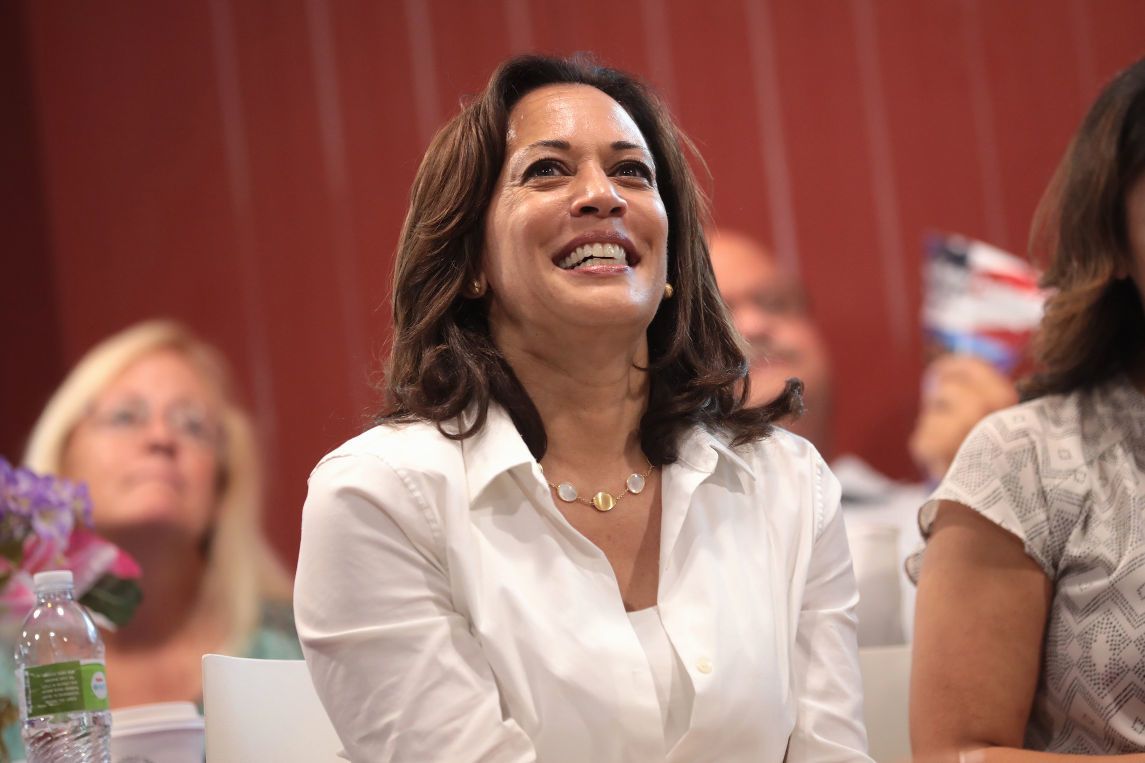
In their congressional careers, both Vice President Mike Pence and Sen. Kamala Harris fell within the norm for their respective parties.
Pence’s six terms as an Indiana Congressman won him a 4 percent score from the League of Conservation Voters, which compiles an annual performance scorecard rating House and Senate members for “good” and “bad” environmental votes. As Indiana governor and as Vice President, Pence stuck to the GOP’s twin themes of climate denial and regulatory rollbacks. In her first four years as a U.S. Senator, the LCV rated Sen. Harris—who has pressed on environmental justice and clean energy—at 91 percent.
The two prior VP candidates that led with environment? You’ve probably already figured out at least one of them, Al Gore. The other one served two terms from 2001 to 2009, Dick Cheney.
 Vice President Al Gore. (Credit: Center for American Progress/flickr)
Vice President Al Gore. (Credit: Center for American Progress/flickr)
Gore came to the vice presidency with his environmental street-cred already well-established. He organized the dramatic 1988 Senate hearings that brought climate change to widespread attention in the U.S. In 1992, his best-selling book, Earth in the Balance, issued a set of stark predictions of environmental stress that stand up distressingly well 28 years later. Also in ’92, he helped lead the U.S. delegation to the Earth Summit in Rio de Janeiro, just months before his election as VP.
Gore also pioneered as a punching bag for his environmental advocacy. In his successful 1992 run with Bill Clinton, sitting President George H. W. Bush derisively called Gore “Ozone Man.” This was a particularly cheesy assault, since Bush had promised to be “The Environmental President” four years earlier.
Dick Cheney served six terms as Wyoming’s lone congressman, garnering a lifetime LCV score of 13 percent. His daughter holds the seat today. Cheney also served as CEO of oilfield supplier Halliburton, Chief of Staff for President Gerald Ford, and Defense Secretary for “The Environmental President.” In none of these roles was he fossil fuel-averse.
But when George W. Bush chose Cheney as his running mate and they captured the White House in 2000, VP Cheney took the reins of a task force bent on making the U.S. a new petro-state, climate science be damned. Cheney muzzled a conscientious Republican EPA Administrator, Christine Whitman, and helped grease the way for oil and gas fracking.
Now years out of power, former VP Gore shared a Nobel Peace Prize and won an Oscar for An Inconvenient Truth.
With the Dems and GOP respectively staging their conventions the next two weeks, I’m not expecting the unexpected. Let’s use the conventions as a guide. President Trump’s 2016 acceptance speech did not include a blessed word about the environment—not even about dismantling environmental protection. Same for Veep-in-waiting Mike Pence.
At the Democrats’ 2016 gathering, LCV President Gene Karpinski carried the green flag; a couple dozen speakers mentioned climate or environment.
And this year, who knows whether the avalanche of new emergencies will allow much oxygen to be left in the room.
Peter Dykstra is our weekend editor and columnist. His views do not necessarily represent those of Environmental Health News, The Daily Climate or publisher, Environmental Health Sciences. Contact him at pdykstra@ehn.org or on Twitter at @Pdykstra.
Banner photo: U.S. Senator Kamala Harris at a fundraiser hosted by the Iowa Asian and Latino Coalition at Jasper Winery in Des Moines, Iowa, in 2019. (Credit: Gage Skidmore)

